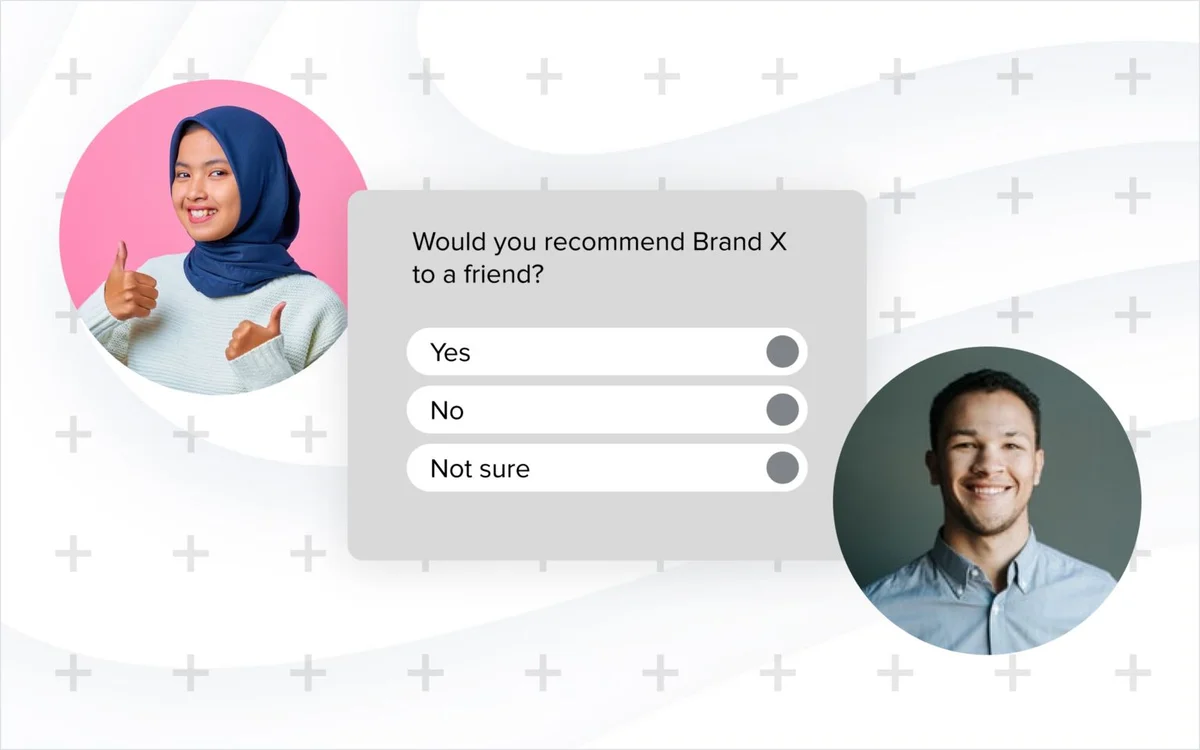Redefining Brand Advertising for Modern Marketers

Written By
Ryan Berman

Learn how to execute more effective brand advertising campaigns that deliver measurable results.
What’s the first thing that comes to mind when you hear the words ‘brand advertising’? Most marketers’ minds will jump to a Super Bowl commercial with its massive reach and broad audiences around huge screens as the ideal way to drive awareness and lift. These ads are seen as a touchdown for improving brand health and sentiment by positively influencing perception of what a brand means to consumers.
While brand advertising is impactful when used in this way, many marketing budgets are based on a specific percentage of sales revenue. Enter the classic push and pull of broad-scale awareness vs. measurement. To determine if a brand awareness campaign is effective, you need the metrics to prove it.
Given the 20+ years of evolution in digital media, measurement, and introduction of AI/machine learning technologies, shouldn’t we be able to find some better way to tie brand advertising to measurable results? The need for a solution has only been compounded by the fact that marketers are at a crossroads (again) with data privacy as well as economic uncertainty:
- Privacy impacts have pushed performance marketers to want to invest in brand
- In 2022, companies are tightening their belts and suddenly missing out on revenue and DR goals. Brands that go dark can experience a drop in awareness and risk losing consumers’ “mental availability” to competitors.
What if there is a way to solve this challenge?
There is a way to do it, and that’s by getting smart with tools we already have at our disposal. I’ll use an example about B2B advertisers.
B2B advertisers often talk about lead generation vs. demand generation, which can be translated to direct response (DR) vs. brand goals, and the great thing about this context is that they both share the same word of ‘generation.’ Brands like Microsoft have created an entire global demand generation team dedicated to generating demand for their products and services because they know that lead generation doesn’t work in a silo.
At the end of the day, both KPIs are leading to generating something, and if it can be tied to a measurable outcome, why shouldn’t it?
How do we connect these dots?
Working with channels or partners with extensive customer journey data, from initial first touch impressions down to conversion and working across channels/devices, allows marketers to capture the entire funnel from demand generation to lead generation.
When running two simultaneous campaigns with brand objectives and DR objectives, we’ve found at Quantcast that this combination performs better than the campaigns on their own, contributing to 45% higher visit rates to client sites. Audiences who saw brand and DR ads were also 11% more likely to convert.
By leveraging robust first-party data sets like Quantcast Measure that tie together open web signals and connected TV devices, you can continue your remarketing message to audiences who have been exposed to your brand in the living room. This real-time advantage allows a brand to message an audience throughout their customer journey from awareness to conversion and across any devices such as CTV, desktop, mobile and tablet as well as formats like video, rich media, display, and native.
There’s no brand advertising without the right audience
We’ve talked about measurement, but measurement isn’t going to be as impactful (or will look poor) if you aren’t reaching the right audience. As mentioned, when we think of brand advertising, the first thing that comes to mind is broad demographics and mass reach.
Thanks to digital, this isn’t the only way to think about audiences in brand advertising anymore.
Why, for instance, try to create awareness with every Gen Z female when your brand’s ideal demographic is actually Gen Z females interested in music, arts/entertainment, pop culture, playing online games, and looking at college/education-related content?
When you work with platforms that can better define and adapt to your audience’s behaviors, you can more effectively execute brand advertising campaigns, delivering demand and ultimately sales more quickly.
Putting this into practice
Okay, you might think, “This sounds great, but I don’t have a $100M media budget, and more importantly, time for onboarding third-party measurement vendors to put this all together.”
While everyone wants more budget and time to allocate it, the Quantcast Platform is built for marketers who don’t have time for stitching together thousands of line-item delivery, impression, and log-level data.
We’ve intentionally built our tools to help expedite even the number of clicks involved to access reporting on how upper funnel campaigns are helping lower funnel campaigns convert at a faster rate.
We’ve also created an entire proprietary Brand Lift Live by Quantcast™ survey, taking in real-time votes, which allow marketers to make quicker decisions about creative, audiences, and devices to serve on.
And finally, we’ve created tools which allow marketers to build highly robust personas of audiences whom they believe are their most likely customers (based on actual site visitation data or open web behavioral signals of intent for any keywords/topics) in minutes, which can be directly saved and attached to campaigns across the open web.
What’s next?
While the world of brand measurement continues to become more complex and evolve each day, Quantcast continues to innovate and leverage our core values of audience measurement to support marketers, publishers, and agencies with their most important challenges. With our data and expertise, we hope to bring more meaningful outcomes and learnings that support the open internet.
Share article

